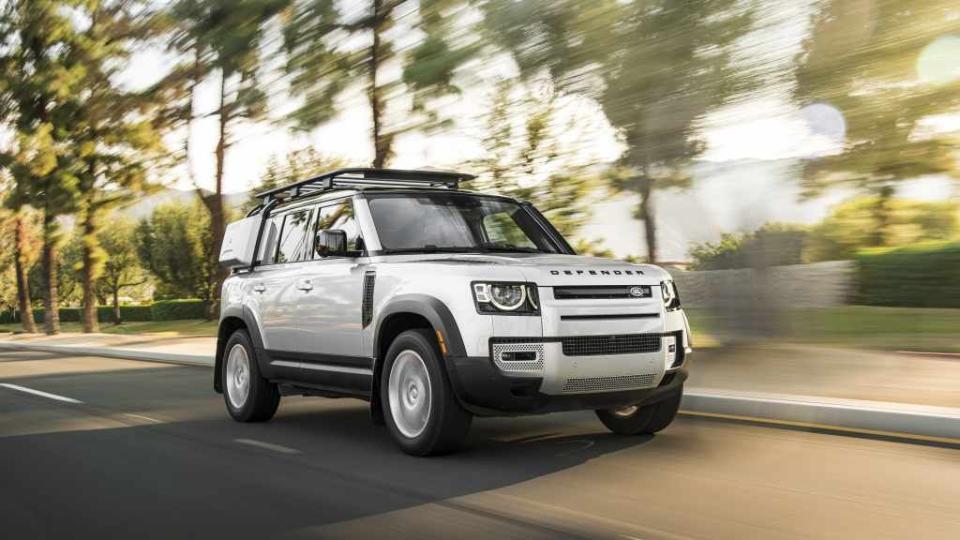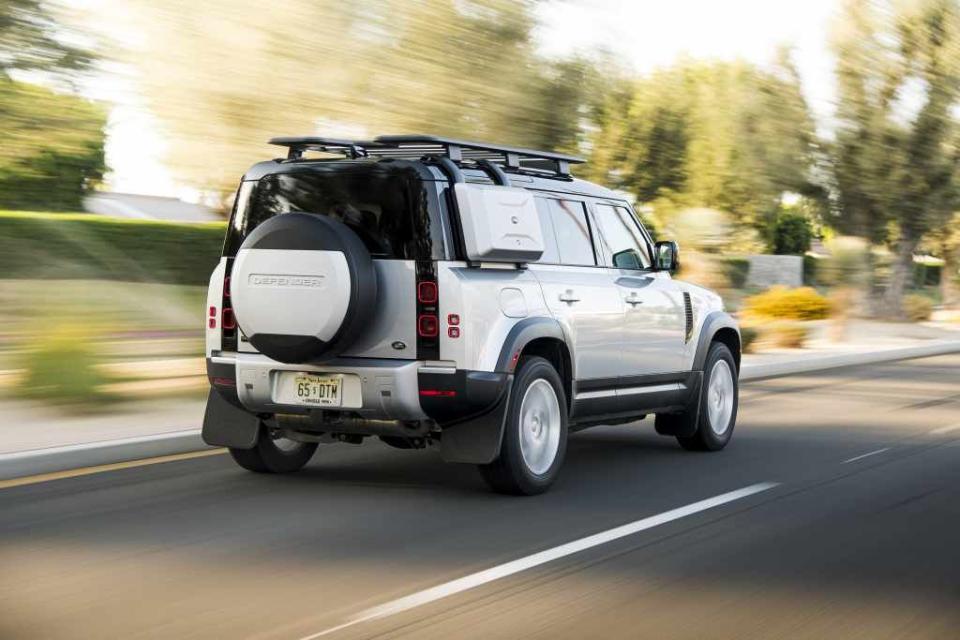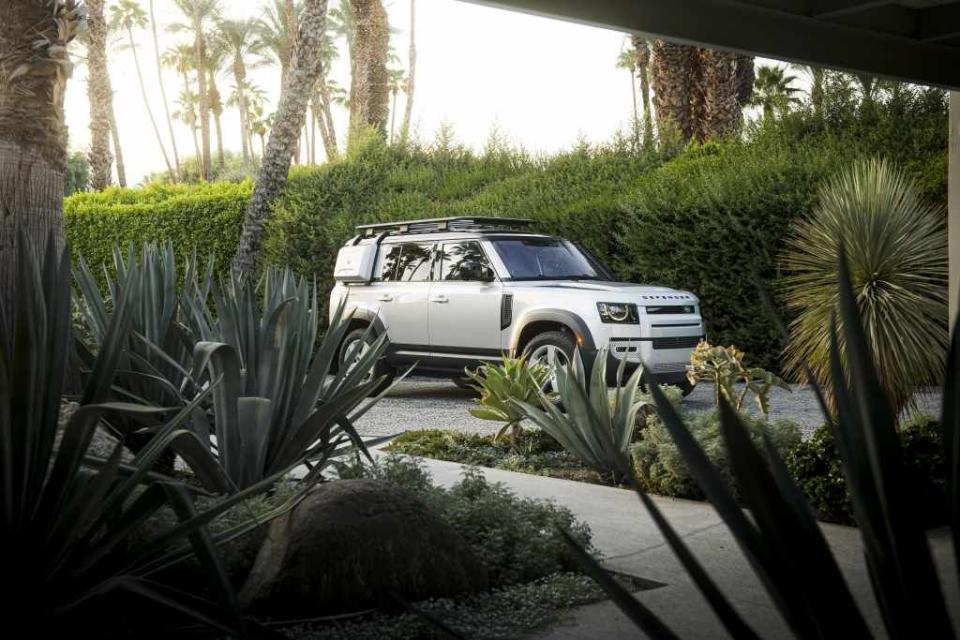Why You Should Choose the Inline-Six Over the V-8 in the Defender

Because I’ve got the frontal lobe of a dirty ape hard mounted to my brain stem, I enjoyed the V-8 Land Rover Defender 110 tremendously. Not for usability or versatility or anything resembling common sense, but because good noises growl out of that Defender’s exhaust pipes and there are fewer sensations more visceral than hurtling two-and-a-half tons down a gravel backroad at interstate speeds.
The V-8 Defender’s overwhelming charisma—but especially the charisma of that engine—allowed me to look past the vehicle’s flaws.
But what if you chopped back that charisma and instead focused on bringing the rest of the vehicle up to snuff? The 2024 Defender 110 S answers that very question.

In place of the supercharged 5.0-liter V-8 sits a 3.0-liter turbo six. The engine makes 395 horses and 406 lb-ft. and routes that grunt through an always-butter 8-speed automatic. The Defender's same basic coil suspension remains, but our test car was spec’d with a $1600 Air Suspension Pack, an Off-Road Pack that adds an e-diff and tires, plus a Cold Climate Pack that heats the windshield and washer jets. The cherry on top is a set of 20-inch color-matched steelies that will draw comments from anyone who stands across from you at the fuel pump.
All told, our Fuji white tester begs $81,103 from the midlands gentry or Los Angeles Chav or whoever shops for a Defender in 2024.
While the turbo-six lacks the outright grunt of that supercharged V-8, the calibration of the six-pot car makes a world of difference. In my previous review, I complained about how difficult it was to drive the V-8 Defender smoothly–how the first couple inches of pedal travel produced barely any forward motion and the following centimeter rocketed the Defender off the line. That, when paired with a touchy, on/off brake pedal, required a ton of patience in bumper-to-bumper traffic and only seemed to come alive if you drove the truck like a real knobhead.
The inline-six Defender’s pedal and drivetrain calibration work far better. That lump of torque is available down low, in its entirety, and the “go” pedal provides a far more linear application of the available torque. Driving at any speed, it’s far easier to get what you want from this engine than the supercharged V-8, despite the difference in power produced by the two engines.

Same goes for the brakes, which require a decent amount of pedal travel before the bite point arrives but offer a far more progressive application of that braking force across the pedal’s travel.
The inline-six even sounds great. Before I opened the hood to check for myself, I suspected Land Rover had sent me the wrong build sheet ahead of the car’s delivery. It’s a burbly, slightly coarse engine note that squeezes its way into the cabin. While it can’t match the outright theater of Land Rover’s V-8, this six is doing a damned fine impression. Good enough you may wonder if your Defender is V-8 powered anyways.

 Yahoo Autos
Yahoo Autos 